The Schnacke Affidavit: U.S. Admission of Offensive Germ Warfare Capability During the Korean War

True crime devotees are familiar with the concept of the “cold case,” which Oxford Languages defines as “an unsolved criminal investigation which remains open pending the discovery of new evidence.” Allegations from China and North Korea that the U.S. used biological weaponry (BW) during the Korean War is an example of just such a cold case.
I recently obtained from the National Archives an affidavit from assistant U.S. attorney Robert H. Schnacke. The sworn statement was filed during a controversial 1950s trial prosecuting the editorial staff of China Monthly Review for sedition for reporting on the controversy over whether the U.S. used BW against China and the People’s Democratic Republic of Korea (DPRK).
In the affidavit, which provides us today with two important pieces of the BW puzzle surrounding the charges of germ warfare aimed at the U.S., Schnacke stipulated the presence of an offensive capability by the U.S. to wage biological warfare dating back to the beginning of 1949, something the U.S. had long hidden or denied. The revelation briefly made headlinesin San Francisco, where the trial was being held, but more generally faded away.
Schnacke’s sworn statement directly contradicts the writings of Cold War scholar Milton Leitenberg, who as recently as 2016 in the pages of a monograph for the Wilson Center’s Cold War International History Project, assured readers, “After 1945, the United States neither produced nor procured any biological munitions until the end of 1951.” Furthermore, Leitenberg asserted — incorrectly — no BW weapon using a human pathogen was “ready until the end of 1954, about 16 months after the Korean War was over” (pg. 8) [1]
“Stop-gap measures” to implement BW “operational readiness” during the Korean War
Contrary to Leitenberg’s assertions, by October 1950, according to a previously Top Secret history of Air Force participation in the BW program, “seven BW agents had been judged feasible for use, all of which could be produced in facilities already established or proposed.” These included anthrax, brucella, tularemia, plague, botulinus toxin, cereal rust spores, and chemical growth regulators.
According to the monograph, written by Dorothy L. Miller, “The only standardized agent-fill [by October 1950] was Brucella suis. Considerable emphasis was being placed on anthrax agent, botulinus toxin, Bacterium tularense, psittacosis virus, and ‘Q’ fever Rickettsia in an attempt to bring them to the point where standardization would be feasible….
“Near the end of the period being reviewed, the development of the feather bomb… made possible an immediate capability against cereal crops. By that time the USAF had definite ideas of what it wanted to do with BW agents” (p. 65). [2]
The feather bomb was to be used to spread BW agent (e.g. wheat rust) against enemy crops. Other BW agents could be spread via feathers as well. Overall, the U.S. Air Force had purchased almost 24,000 biological cluster bomblets (M33) by October 1950.
Most of the BW agents noted above, except brucella, were singled out as used in U.S. BW operations by pathologists and virologists in China and North Korea during the Korean War. See discussion of this throughout the September 1952 report of the International Scientific Commission, headed by British scientist Joseph Needham.
Corroborating Miller’s account, a declassified secret “Summary History of Chemical Corps Activities,” prepared by the Historical Office, Office of the Chief Chemical Officer, dated February 1953, revealed that between 9 September 1951 and 31 December 1952, “The field of biological warfare (BW) received more and more emphasis from every standpoint. Work on BW agents led to the standardization of an anti-personnel agent…. Work on BW munitions led to the standardization of the M114 bomb for dispersion from the M33 cluster.” [pp. 13, 16]
“Standardization” is the term used for the readiness of a weapon for operational use by way of common, interchangeable and compatible components for military purposes.
According to the same Chemical Corps historical report, the Secretary of Defense ordered a review of the military’s BW and CW readiness in early 1952. An appointed committee, headed by Dr. J.R. Killian, Jr., submitted the results of its review on 17 April 1952. It called for “greater emphasis on the development of weapons and of procedures for testing the effectiveness of BW agents for anti-personnel use” [p. 6].

A reorganization was undertaken. The Chemical Corp’s Research and Development Division “in the field” was replaced by a new Research and Engineering Command “with increased responsibilities.” With the establishment of Research and Engineering Command, activities such as the Chemical Corps Chemical and Radiological Laboratories were placed under Brigadier General William M. Creasy, Commanding General, R&E Command” [pp. 11–12]
A lot of money was placed under Brig. Gen. Creasy’s control. The Military Construction Program for the Chemical Corps for FY 1952 included a total appropriation and allocation at the four principal R&E Command installations of some $34,660,000, while some $27,000,000 were earmarked for that purpose in the FY 1953 budget.”
That’s over $60 million (or over $600 million in 2021 dollars) for what turned out to be a “stop-gap” BW program to meet the military needs of the U.S. in the Korean War, given that the aerosol and other advanced BW weapons the Chemical Corps was working on were taking too long to reach operational use.
As the 1953 Chemical Corps “Summary History” retrospectively explained the situation, “During the period 9 September 1951- 31 December 1952, the Chemical Corps was principally concerned with the support of the Korean War and with the improvement of the Bacteriological Warfare (BW) and Chemical Warfare (CW) capabilities of the Armed Forces in the event of an emergency and in defense against radiological attack (RW).” [p. 1]
In a key passage, the report described the work done:
Thanks to the world situation of limited war the research and development programs were directed at the immediate completion of short-term developments where immediate benefit to operational effectiveness would result. Although some of these developments were admittedly stop-gap measures, such as the M114 biological bomb, they provided something to use if it were required. At the same time developments were accelerated in order to ease the greatest operational deficiencies. The emphasis was therefore placed on end items in all fields, weapons and munitions for the dissemination of nerve gases (G-agents), and the entire field of biological warfare. [p. 13]
In the end, the U.S. “crash program” on BW would prove a disappointment, and the pressure for quick development of BW weapons ended in late 1953, after the end of the Korean War, as future articles will explore.
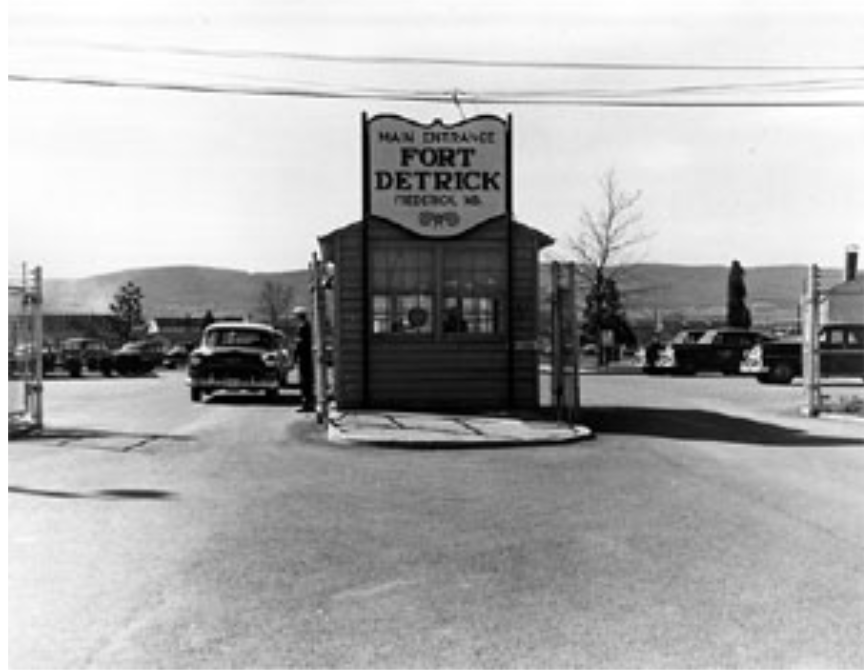
SOD and MKNAOMI
The “short-term developments and “stop-gap measures” appear to refer to the use of weaponry utilizing insect vectors and BW sabotage as used by Japan’s BW program against China in World War Two. We know with near certainty that such weapons were used thanks to the release of U.S. communications intelligence reports from the Korean War that describe Chinese and North Korean military units reacting to BW attack, including by the dropping of insects and other infected materials, in an effort to contaminate the ground and spread disease. These messages were sent without any knowledge they were overheard, and can be considered powerful evidence of BW attack.
U.S. government prosecutors were concerned about efforts in the late 1950s by journalists John W. Powell, Sylvia Powell and Julian Schuman — who all were on trial for sedition for reporting from China on the U.S. BW campaign — to subpoena documents on the U.S. germ warfare program. In a sworn filing to the court, Schnacke offered a stipulation concerning U.S. capabilities with both offensive and defensive germ warfare, while denying the Armed Forces ever dropped germ weapons over Korea.
Backing up Schnake was a supporting affidavit from John L. Schwab, the former Chief of the Special Operations Division (SOD) at Ft. Detrick during the Korean War. Schwab had been a U.S. Chemical Corps officer since 1942. By 1952, he was also “Deputy Director of the activities” at Ft. Detrick.
But Schwab had a more incredible background.
According to former staff assistant to the Director of the State Department’s Bureau of Intelligence and Research, John Marks, in his famous 1979 book, The Search for the Manchurian Candidate, it was Schwab who created the SOD in 1950. But according to Miller’s history, quoted above, “The Special Operations Division was activated at Camp Detrick on 17 May 1949 to perform research and development in the field of covert or sabotage operations.” Moreover, SOD was also “responsible for liaison between the Chemical Corps and various government agencies….” (p. 53)
More ominously, Schwab also was present on November 18, 1953, when his co-worker, Frank Olson, was surreptitiously dosed with LSD (and possibly other drugs) at a get-together of CIA and SOD personnel at Deep Creek Lodge in western Maryland (Marks, pg. 55).
The Olson story itself is famous and was recently the subject of an Errol Morris Netflix documentary, Wormwood. The CIA has explained that the CIA use led Olson to commit suicide. But according to the late researcher Hank Albarelli, Olson was killed by the CIA because he was a security risk. From his vantage point at Ft. Detrick’s SOD, Olson knew the details of the U.S. biowar plans and operations.
According to my research, it seems highly likely that the bioweapons constructed as part of the CIA’s Project MKNAOMI, in concert with advice and possible operational collaboration with the former bioweapons researchers from Japan’s Unit 731 and officials from the U.S. Chemical Corps, were shipped to Korea by the CIA for use in the Korean War. The Unit 731 leaders had been granted amnesty by the United States only a few years earlier for BW war crimes against China during World War II, with the prid pro quo that the Japanese scientists, who had gathered their data largely via fatal experiments on prisoners at their large secret labs in Harbin, Manchuria, would provide the data from such experiments on germ warfare directly to the Americans.

Moreover, important personnel from the Department of Defense’s Research and Development Board, and the U.S. Army’s Chemical Corps, who were intimately involved in the assimilation of Japan’s BW program and data, and the amnesty
Schwab had close and daily contact with CIA leadership and researchers involved in MKNAOMI, the covert program the CIA operated in collaboration with the U.S. Army, where they worked in tandem, as the 1970s U.S. Senate Church Committee put it, “developing, testing, and maintaining biological agents and delivery systems for use against humans as well as against animals and crops” (pg. 6).
The Army was inhibited in conducting germ warfare due to a wobbly “retaliation only” use policy, so that any such use of BW would by necessity have to be covert. In a discussion of the “retaliation only” policy by Air Force historian Dorothy L. Miller in her formerly Top Secret History of Air Force Participation in Biological Warfare Program, 1951–54, Miller wrote:
There was no stated national policy with respect to biological warfare. However, biological warfare was associated so closely with chemical warfare that the policy for both was assumed to be the same. Under this implied policy, the biological weapon could be used only if authorized by the President of the United States, and even then only on a retaliatory basis….
Subsequently, the policy was to de-emphasize talk about the offensive use of bacteriological agents and even to withhold a positive official endorsement of the retaliatory concept. It seemed advisable to preserve a certain flexibility on this vital matter. [pp. 57–58, 60]
Secret vs Covert
What appears evident is that there were two different BW programs underway by February 1952, when the North Korean and Chinese governments went public with charges of wide-spread U.S. bombing with biological weapons. One program was overt, run by the U.S. Army Chemical Corps, though still subject to classification as secret or top secret. The aim of the program was to establish weapons that later would be openly used.
The other program was covert, deniable, its operational approval never written down, and run via the CIA (likely with knowledge or participation of selected U.S. Army Chemical Corps leaders and scientists). The CIA had their own aircraft, but otherwise used USAF, Army, Marine, and other military units and personnel as required, with the blessing of the Pentagon’s Joint Chiefs of Staff, who had already been pushing for a “crash” program in BW as early as 1950.[3]
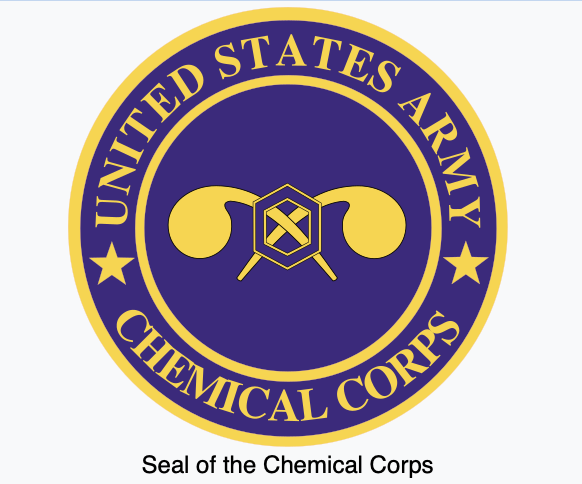
With this in mind, Schwab’s affidavit reads like an exemplar of “plausible deniability.” It is worth reproducing its primary assertions.
Schwab noted in the first of two statements that from 7 July 1950 through 23 July 1953 the U.S. Army had primary responsibility “for biological warfare agents for all the Armed Forces Services of the United States.” He stated:
“No shipment was made during the period 7 July 1950 to 23 July 1953, or any other period prior thereto, of any biological warfare materiel, any weapons, or means of manufacture of such materiel and weapons, to any other Armed Forces Services of the United States or from the United States to bases in Korea and Japan or islands elsewhere in the Pacific, which are readily accessible to the Korean-Japanese theatre of operations.”
The second Schwab affidavit, dated like the first on 23 December 1958, states:
“I was, and am, familiar with the mission, activities, and capabilities of the Chemical Corps, U.S. Army, during the period 1 January 1949 to 27 July 1953;
“That during that period indicated above the U.S. Army had a capability to wage both chemical and biological warfare, offensively and defensively; and
“That during the aforesaid period, the biological warfare capability was based upon resources available and retrained only within the continental limits of the United States.
Nowhere in either Schwab or Schnacke’s affidavits is there any mention of the CIA, or covert use of BW, such as we know from previous investigations and document releases took place. It appears by 1959 at the time of the Powell trial, the U.S. government was willing to admit offensive BW capabilities as a “limited hangout” to better hide the covert BW program that actually took place. Powell’s case was ultimately dismissed as a mistrial in 1959, but legal prosecution hanged over those involved until the early 1960s, as the government sought to destroy the lives of those who reported truthfully on the Korean War BW scandal.
“Baptism by Fire”
In September 2020, I posted, with analysis, two dozen declassified CIA communications intelligence reports from 1952 that described Chinese and North Korean military units describing attacks with germ warfare weapons by the United States, and their reaction to such attacks. Posted as part of the CIA’s “Baptism by Fire” release of selected Korean War documents, this was the first strong documentary evidence from U.S. government sources of the validity of Communist charges of U.S. use of biological weapons during the Korean War. (The documents themselves have been posted online.)
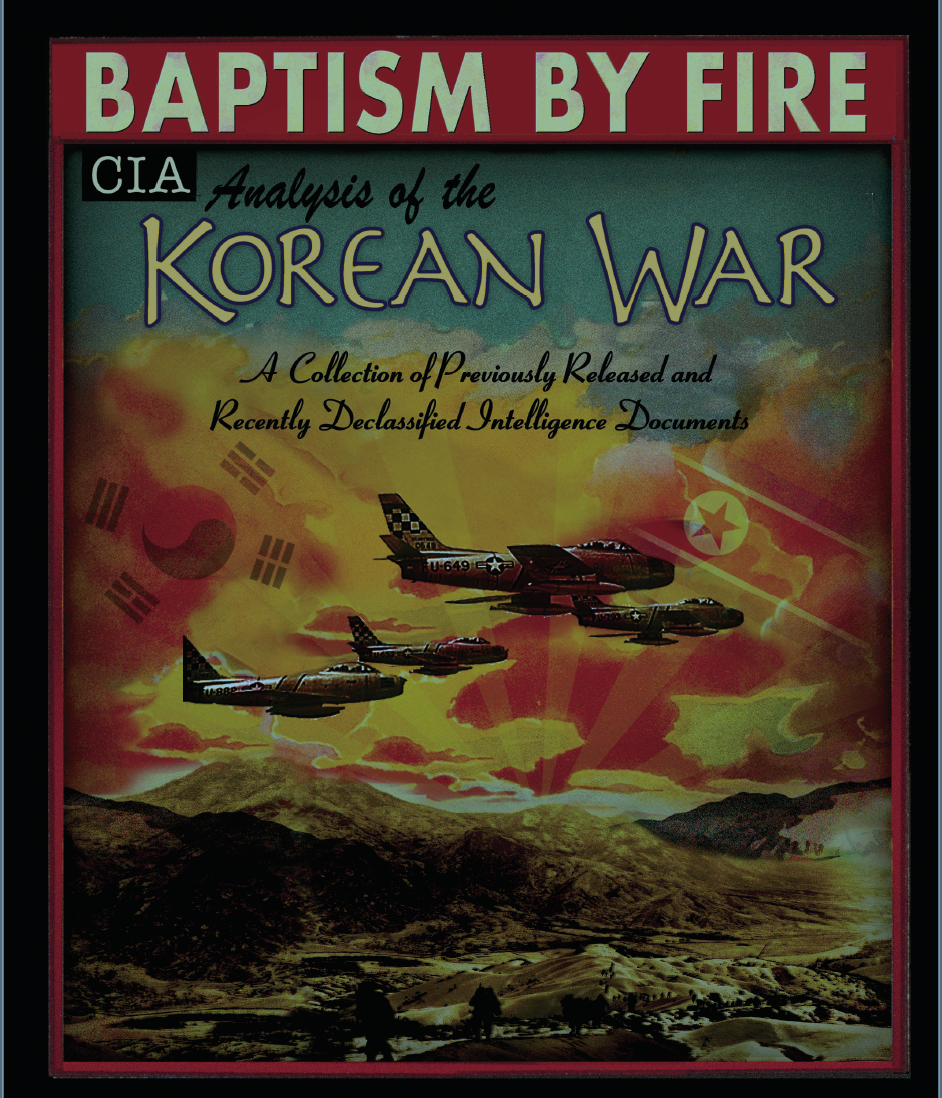
It is well documented that by 1943 the US military and its allies had developed a robust and well-funded biological warfare program. The U.S. had helped develop with Great Britain an anthrax bomb, and had even begun pilot production of anthrax ordinance at Camp Detrick in May 1944 (Harris and Paxman, 1982/2002, p. 104).
Earlier, in July 1945, according to a “Secret” memo, written by Captain Donald B. Summers, Chemical Warfare Service Chief to the Special Assistants Division of the Research and Development Branch of the U.S. Office of Strategic Services, in the final months of World War II the Joint Chiefs of Staff had given approval for the use of “plant BW provided the theater commander wishes to use it.” Authorization was not written down but given orally.[4]
The issue of the possible contribution of Japanese BW research to alleged U.S. biological weapons attack during the Korean War was a prominent feature in propaganda from the Soviet Union, China and North Korea during the period. A good example of this can be found in the full February 22, 1952 statement from the North Korean Foreign Minister.
In September 1952, the Report of International Scientific Commission for the Investigation of the Facts Concerning Bacterial Warfare in Korea and China, issued under the auspices of the World Peace Council, and solicited by the Chinese government and some Western scientists, specifically pointed out the similarities between the alleged germ warfare attacks and the methods of Japan’s Unit 731 (Report of the ISC, 1952, pgs. 11–12 and 58), most notably the use of insect vectors to deliver pathogens.
Stubblefield and Wetter: Links between Unit 731 and the U.S. Biowar Program
In a ground-breaking 1981 article in The Bulletin of Atomic Scientistsexposing the U.S. decision to shield Japanese officials and scientists associated with Japan’s research and operational use of BW, journalist John W. Powell, who had earlier escaped prison for reporting on U.S. BW, described how two doctors associated with U.S. biological warfare research, Edward Wetter and Henry I. Stubblefield, had strenuously argued for collaboration with the Japanese military bioscientists. (See pgs. 47 and 48.)
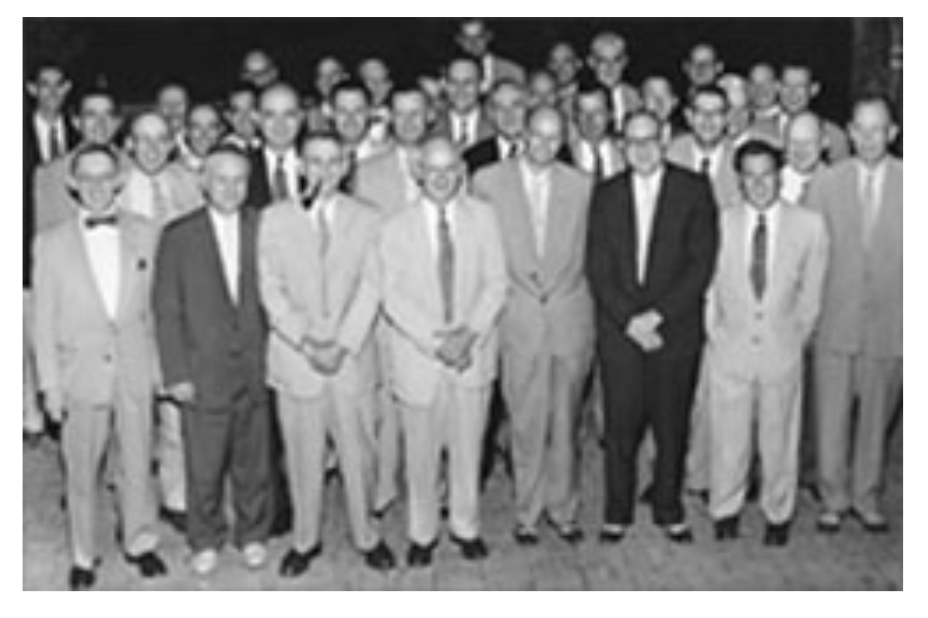
According to Powell, in a July 1, 1947 memo meant “for restricted circulation to a handful of military and State Department officials,” Stubblefield and Wetter reported that Ishii and his associates were cooperating with U.S. officials and “had agreed to supply photographs of ‘selected examples of 8,000 slides of tissues from autopsies of humans and animals subjected to BW experiments.’” (See also this Washington Postarticle.)
Moreover, Stubblefield, who was with the U.S. Army Chemical Corps, and Wetter, who was with the National Research and Development Board, argued that Ishii and his collaborators should not be subjected to the war crimes prosecution then being organized under the auspices of the International Military Tribunal for the Far East. They wrote, “such publicity must be avoided in the interests of defense and national security of the U.S.”
These Defense Department-affiliated doctors also found that the Japanese BW data was “of great value to the U.S. BW research program,” adding, “The value to U.S. of Japanese BW data is of such importance to national security as to far outweigh the value accruing from war crimes prosecution’” (Powell, ibid.). This was not the last we will hear of Drs. Stubblefield and Wetter. [5] [6]
A “Crash” Program in BW
On June 30, 1950, only a few days after the official outbreak of the Korean War, an “ad hoc” committee chaired by Earl Stevenson, President of the large consulting firm, Arthur D. Little, Inc., submitted a report to the Secretary of Defense, General George Marshall, with observations and recommendations on the use of chemical, biological and radiological weapons (CBR). Among its “major recommendations” were that CBR weapons “not be restricted by a policy of use ‘in retaliation only.’” (Report, 1950, p. 1)
The Stevenson committee also recommended that “field tests of biological warfare agents and munitions be carried out as soon as possible on a scale sufficient to determine the military worth of agent-munition combinations, their offensive uses and the means of defense against them, and to secure definitive information on other problems inherent in biological warfare.” (Ibid.)
The authors of the Stevenson report stated, “Biological agents have never been used on a significant scale in warfare and have been incompletely explored as weapons” (p. 15). But this was not true, and the Stevenson reports failure to mention the U.S. protection of and collaboration with Japan’s Unit 731 is indicative of just how deeply that cooperation was buried.
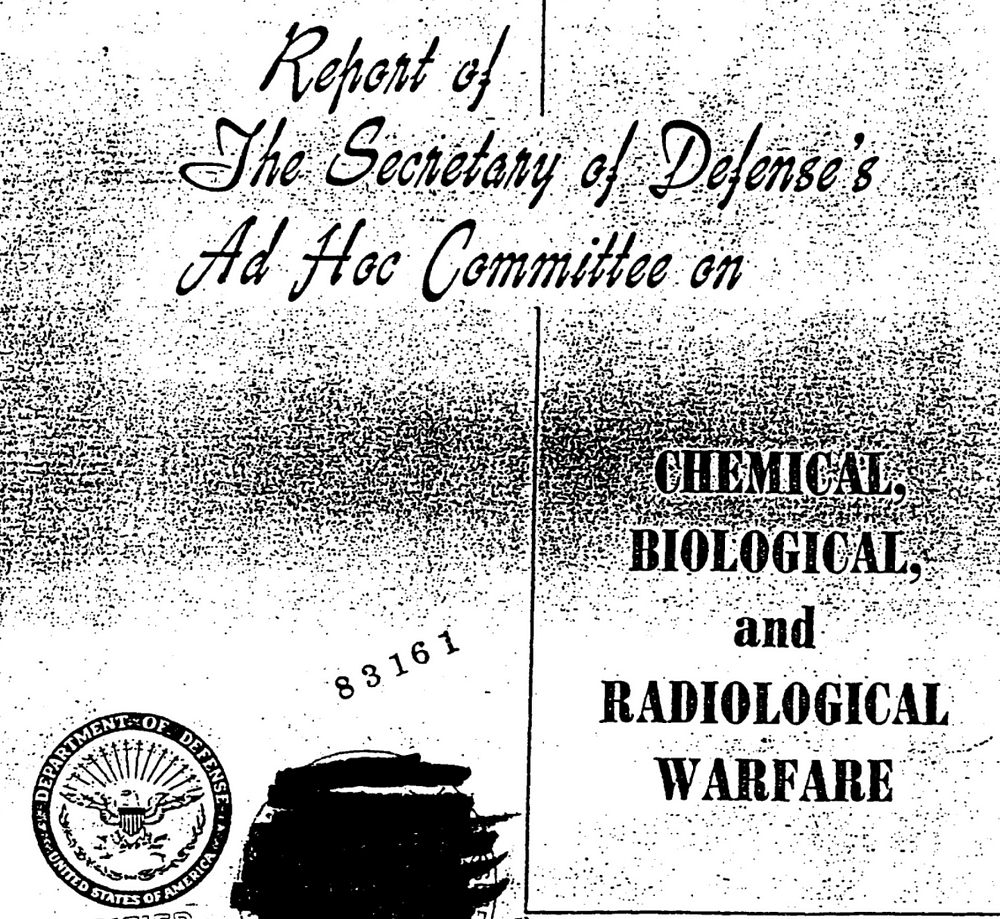
So it is with some surprise that one of the four Defense Department officials assigned to the Secretariat of the Ad Hoc Committee was the aforementioned Edward Wetter, who knew a great deal about Japan’s research into and use of biological weapons. Such knowledge was apparently only for those briefed on such classified information. Still, the Stevenson report went on to state, “the potential worth and the dangers of BW appear to be great…. Evidence from various sources supports such a conclusion” (Ibid.) Those sources were not enumerated, but it seems highly likely that is a reference to the Japanese studies.
The Stevenson report considered the “military worth” of biological weapons, and opined, “Conclusive information” of such military worth “is not likely to be found short of their use in war.” Data on “their operational feasibility and effectiveness could be obtained if the BW agents, together with their munitions, were subjected to large-scale field tests.” But “adequate field testing facilities” were “not available.”
Even so, the “ad hoc” committee argued (with Wetter in the wings), “large-scale field tests on the BW agents and munitions should be carried out as soon as possible.” It would appear that the BW campaign in Korea and China in 1951–53 was just that large-scale use of BW to determine “military worth” of BW that the Stevenson report envisioned (Ibid, p. 17).
In October 1950, Secretary of Defense Marshall approved the recommendations of the Stevenson report, but held off on removing the “retaliation only” restrictions, which the Ad Hoc committee had advocated. According to a U.S. Army study of the period,[7] the Army’s Chemical Corps was given “prime responsibility for carrying out the Stevenson recommendations” (p. 3–1).
In November 1951, the Chemical Corps’ Office of the Chief Chemical Officer (OCCO) underwent a significant reorganization, and Dr. Henry I. Stubblefield — who we saw was intimately involved in the amnesty and cooperation with Unit 731 — was named Chief of the new Research Division with the Research and Development Branch of the OCCO, placing thereby another key U.S. official with knowledge of and enthusiasm for Unit 731’s activities at the heart of Chemical Corps’ BW efforts just on the eve of the alleged U.S. BW Korean War campaign, a campaign that was known to heavily rely on older Japanese techniques.
But even before Marshall had approved the recommendation, a BW production facility was already being planned at Pine Bluff Arsenal, Arkansas. Whether or not any BW materials from the U.S. ever made it to the Far East, expertise and covert operational capacity certainly was capable of making such a voyage. Meanwhile, according to the U.S. Army history cited above, “In September 1951, the JCS assigned priorities to the Army for the development of specific BW agents…. A directive to improve CBR readiness was issued to all elements of the Defense Department on 21 December 1951” (p. 3–3).
Less than two weeks before issuing an approval, on 15 February 1952, Air Force Chief of Staff Hoyt Vandenberg, commenting on the JASC report, issued his own memo describing the JASC recommendations as “generally sound and their official recommendation by the Joint Chiefs of Staff would significantly aid the bacteriological warfare program…. A great deal of progress in the bacteriological warfare field has occurred since the inception of the JASC study… certain offensive capabilities are rapidly materializing” (Endicott and Hagerman, 1998, p. 227).
That’s a lot of “progress” in only five months, and it is tempting to wonder if it weren’t associated with the BW experimental campaign in Korea and China apparently “materializing” for use by the U.S. Air Force and Marine Corps (and possibly the Navy) with the aid of former members of Japan’s Unit 731.
On 5 March 1954, Secretary of Defense Charles Wilson canceled the 21 December 1951 directive. The results of the BW “crash program” had been disappointing. According to Dorothy L. Miller’s USAF history of the period, “The new directive affirmed the necessity for a biological warfare program, but it reduced the pressure to build up an immediate capability. Instead, the emphasis was to be upon long range research and development, with an adequate field testing program. The military services realized that they had reached the point of diminishing returns on the development of existing end items (p. 79).”
Due to government secrecy, and the passage of time, we still do not know the full parameters of the U.S. biological warfare program during the Korean War period. Full transparency is something that awaits public clamor and concerted effort to finally end the Korean War, and thereby, finally end the Cold War itself.
Endnotes
1. Milton Leitenberg (2016), China’s False Allegations of the Use of Biological Weapons by the United States during the Korean War, CWIHP Working Paper #78, March 2016, Woodrow Wilson International Center for Scholars. [Online] Available at link. Accessed 29 October 2020. — Leitenberg turned down my request to answer a number of questions about his work, except to reiterate that Soviet archival documents, unearthed in 1998 and supposedly proving the Communists concocted BW “evidence,” were real. He would not answer questions I had about factual statements made in these documents and asked that I not write to him any further. A more intensive analysis of Leitenberg’s work on this subject is forthcoming soon, but some examples of my critique can be followed in this article. Similarly, questions sent to Kathryn Weathersby, the translator of the Soviet documents, and author of an early essay claiming their authenticity and reliability, went unanswered.
2. Dorothy L. Miller, History of the Air Force Participation in Biological Warfare Program 1944–1951, Historical Office, Office of the Executive, Air Materiel Command, Historical Study no 194, Wright-Patterson Air Force Base, September 1952. Originally Top Secret, but declassified with deletions, June 1978. Available at link. The second part of her history, covering the period 1951–1954, is available at this link. Both links accessed 17 July 2021.
3. For a discussion of the CIA’s role in the Korean War, with special emphasis on the BW issue, see Stephen Endicott and Edward Hagerman, The United States and Biological Warfare: Secrets from the Early Cold War and Korea, (1998, Indiana Univ. Press), Ch. 9, “The CIA in the Korean War,” pp. 129–142.
For an example of internal Chemical Corps references to the BW “crash” program in BW, see “Research and Development Division, Office of the Chief Chemical Officer, Historical Report, 15 October 1951 to 31 December 1951,” Part V, “Operations”, pp. 8–9:
“Recommendations of the Chemical Corps Advisory Council (7–8 September 1951) were approved for implementation with the following reservations and comments:
“a. That the recommendation concerning cold weather agents correctly expressed the concern of the Chief Chemical Officer.
“b. That the proposed Crash Program in the BW field applied specifically to the development of the data necessary for design of plants and did not embrace the munition field. The recommendation was deferred pending receipt of an Advisory Council estimate as to the cost and availability of funds for the recommended Crash Program.”
The discussion about who was responsible for what in the BW program was a focus of Miller’s USAF history of participation in the BW program during the 1944–1954, referenced in this article. It was issued in two parts and is not fully declassified even now.
4. The documentation for this extraordinary claim, not documented in any current history of the subject, comes from “Final Summary Report on BW [Biological Warfare], from the Special Assistants Division, Research and Development Branch,” September 27, 1945, 7 pp., Records of the Office of Strategic Services (Record Group 226) 1940–1947, Entry 211, Box 20 of 45. Location: 250/64/32/1. CIA Accession: 85–0215R. Folder “G/6, Med Res. Lab #3”.
5. Since these two doctors will play an important role in the U.S. BW program, the relevant biographical details are provided here. In June 1947, Edward Wetter served as “Panel Director” of the Committee on Biological Warfare, part of the Defense Department’s Research and Development Board (Powell, 1980, p. 9). A June 1950 report to the U.S. Secretary of Defense from the “Ad Hoc Committee on Chemical, Biological and Radiological Warfare,” aka the Stevenson Report, listed Edward Wetter as a representative of the Defense Department’s Research and Development Board on a four-person “Secretariat” to the Committee (Secretary of Defense Report, 1950, p. ix). In 1952, Wetter was introduced to a Congressional subcommittee on Appropriations, to whom he provided a classified briefing, as Deputy Executive Director of the U.S. Defense Department’s Research and Development Board’s Committee on Biological Warfare (Hearings, 1952, p. 212; Powell, 1980, p. 9) Only a few years after the end of the Korean War, Wetter worked as Executive Secretary, Committee and Panel on Special Operations, Office of the Assistant Secretary of Defense, Research and Development (U.S. Civil Service Commission, 1955, p. 114).
6. On November 1, 1951, Dr. Henry I. Stubblefield was appointed Chief, Research Branch, Research and Development Division of the Office of Chief Chemical Officer (OCCO, part of U.S. Army’s Chemical Corps). The same report that announced Stubblefield’s promotion directly referenced the Chemical Board’s proposed “Crash Program in the BW field” (Historical Report, 1952a, p. 9). Stubblefield apparently also served for some time during this period as Security Officer for the R&D Division of OCCO (Historical Report, 1952b, pp. 4 and 12). In February 1952, Dr. Stubblefield attended “Research and Development Board subpanel” meetings on “Agents” and “Medical Aspects,” presumably related to BW. In a 1993 history of Ft. Detrick operations, Stubblefield was listed as one of “many of the principles of the biological laboratories from World War II to early 1960s.” In a photo dated 5 October 1954, he is identified as being with the “Chemical Corps office” and, along with all the individuals in the photo, also a member of the Chemical Corps Advisory Council (Covert, 1993, p. 57).
7. U.S. Army Activity in the U.S. Biological Warfare Programs, 1942–1977, Vol. 1, 25 February 1977, Department of the Army. [Online] Available at link. Accessed 22 May 2021.

0 Comments:
Post a Comment
Subscribe to Post Comments [Atom]
<< Home